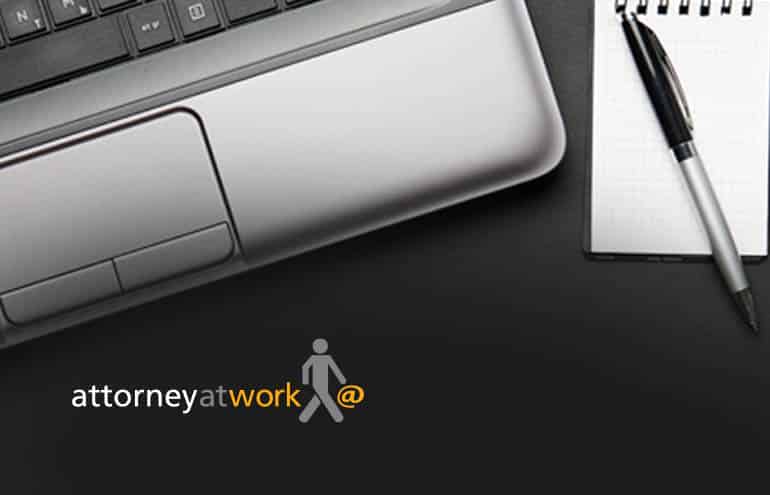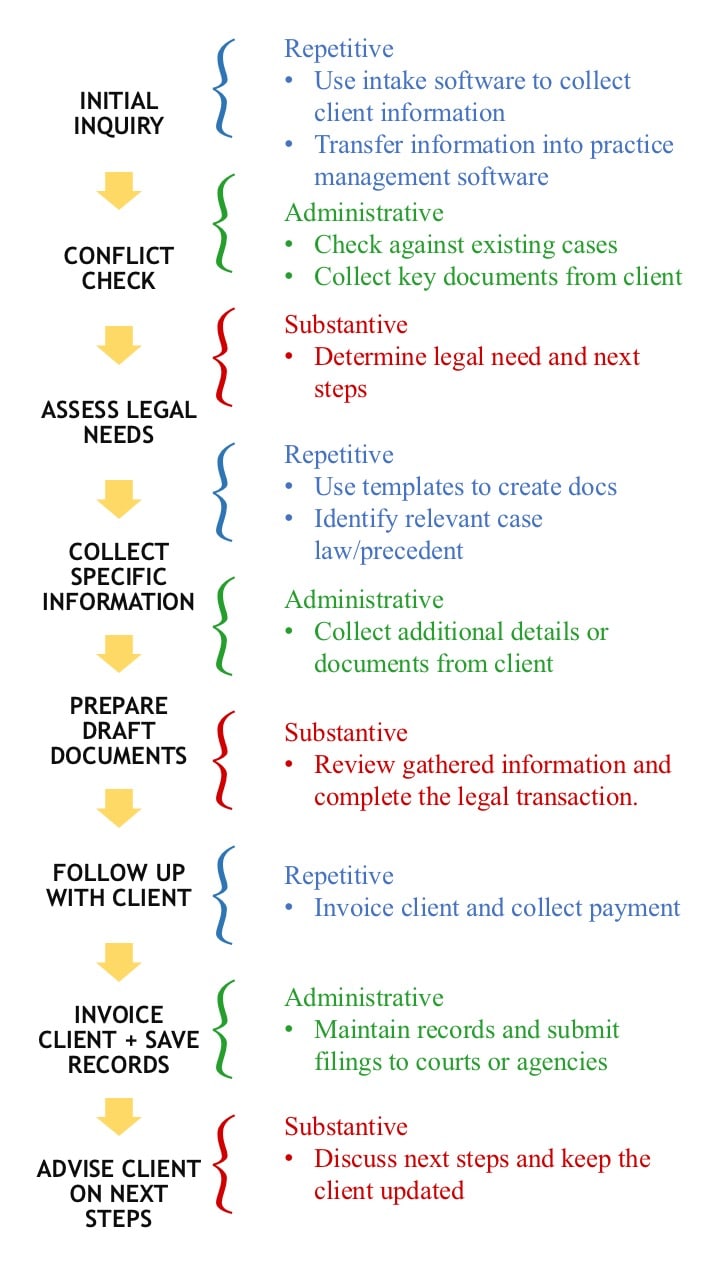Make your workflow go more smoothly by using business process mapping to select the right legal technology and save hundreds of hours.

Table of contents
A recent study by Clio found that, on average, a mere quarter of an attorney’s working hours are spent on billable tasks — and the percentage is even lower for solo practitioners. Technology can address this problem. However, let’s face it: There are more technology solutions for lawyers than ever before, and the options can seem overwhelming. Every new legal tech vendor claims to be the cure for your practice woes, but how can you even determine which technology you need in the first place?
How Lawyers Can Use Process Mapping
As an attorney and now the CEO of a legal tech company, I use a concept known as “process mapping.” You can apply the same methodology to identify which areas of your legal workflow are ripe for automation.
Is It Repetitive, Administrative or Substantive?
So, how do lawyers apply business process mapping to save hundreds of hours every year? Process mapping starts with a breakdown of every step a lawyer takes in performing a legal transaction. After identifying the steps, divide each step into separate tasks. These tasks should then be categorized into repetitive, administrative and substantive items.
- Repetitive tasks do not require any interpretation or decision-making. They are entirely monotonous, and as a result, they are ripe for automation.
- Administrative tasks require minimal interpretation but not analysis of substantive legal issues. Because these tasks cannot be entirely automated, they should be delegated to an assistant or paralegal when possible.
- Substantive tasks require interpretation and critical thinking. These tasks require your legal education and experience; they also provide the greatest value to your clients.

The Process in Action
Let’s apply this methodology to a general legal transaction. For most attorneys, these are the steps:
Collecting client information
- Repetitive: Software tools such as Law Ruler and HelloSign combined with Zapier can create automated workflows that gather basic information about a client’s initial inquiry, provide an engagement letter, and even collect a retainer. Ideally, all of this information would be collected at once, but often it requires multiple follow-ups.
- Administrative: A paralegal or assistant can help identify and assess potential client conflicts and collect other details the attorney will need to prepare the necessary documents.
- Substantive: The attorney would then focus on the scope of the legal need and his or her ability to assist the client based on the intake.
Performing the WORK
- Repetitive: Document assembly software like HotDocs or other practice area specific tools can provide working drafts or templates based on the information from the first step. In addition, tools like Casetext’s CARA can even streamline research by identifying relevant case law.
- Administrative: During this phase, assistants and paralegals can follow up with clients to collect additional basic information regarding their legal needs — like a specific specimen showing the client’s use of a trademark.
- Substantive: The lawyer would then review the client intakes, further engage with the client and take the steps necessary to complete the legal matter. For example, use the information gathered during the intake process to draft a contract.
Completing the transaction
- Repetitive: Tools like Clio and MyCase can store the documents and client information and then send invoices at the completion of a matter and collect payment. These tools can also give clients access to their case files and provide regular updates about the status of the work.
- Administrative: The need to maintain client records is critical for lawyers, and paralegals can maintain and categorize records as well as complete filings needed with government offices or agencies.
- Substantive: The attorney would discuss any next or ongoing steps with the client, give the client with any documents, and provide any other future updates.
Although this example is a simplification of the steps involved in a legal transaction, process mapping can help you increase productivity. Delegating repetitive and administrative tasks to technology and assistants allows for more billable hours, increases in profitability, and better work. Clearly identifying these tasks within your workflow will also allow you to pick the legal technology software that will best complement your practice.
Nehal Madhani is an attorney and founder and CEO of Alt Legal, cloud-based software for preparing and managing IP filings. Before starting Alt Legal, Nehal practiced as an attorney at Kirkland & Ellis LLP. He is a Python/Django developer and a CodeX fellow at Stanford Law School. Nehal speaks and writes regularly about the intersection of legal practice and technology. Follow him on Twitter @nehalm.
More Ideas for Incorporating Technology into Your Workflow:
Illustration ©iStockPhoto.com





















